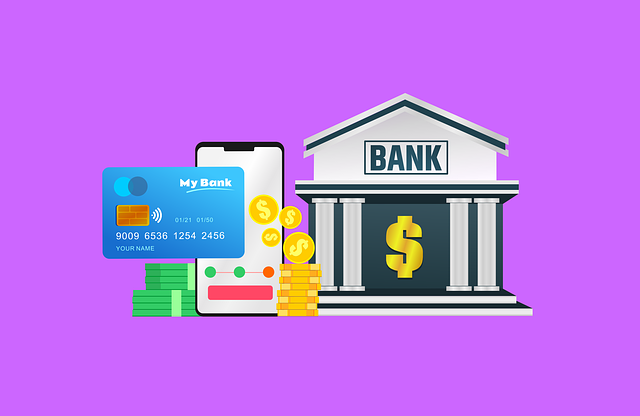Invoice factoring is a financial solution offering businesses immediate cash flow by converting outstanding invoices into quick funds. This alternative to traditional banking loans enables SMEs to access capital within 24 hours, addressing liquidity issues and covering operational expenses promptly. By selling invoices to a third-party factor, companies gain flexible funding with simplified accounts receivable management, eliminating collection processes and bad debt risks. While providing swift cash, invoice factoring incurs varying interest rates and fees, so businesses should carefully vet lenders and maintain meticulous financial records for optimal cost management.
“Invoice factoring is a powerful financial tool that offers businesses an efficient way to transform their outstanding invoices into immediate cash. In today’s fast-paced business landscape, understanding the benefits and processes of invoice factoring can significantly improve cash flow management. This comprehensive guide will take you on a journey through the basics, advantages, and step-by-step process, revealing how this practice provides businesses with quick access to capital, enhancing their financial flexibility and growth prospects.”
- What is Invoice Factoring?
- How Does Invoice Factoring Work?
- Immediate Funding: A Key Advantage
- Benefits for Businesses: Cash Flow and More
- The Process: From Start to Finish
- Considerations and Best Practices
What is Invoice Factoring?

Invoice factoring is a financial transaction that allows businesses to convert their outstanding invoices into immediate cash. Instead of waiting for customers to pay their bills, companies can sell these invoices to a third-party funding provider, known as a factor. This process provides quick access to cash flow, enabling businesses to meet their short-term financial needs and operational expenses promptly.
It offers several benefits, especially for small and medium-sized enterprises (SMEs). With immediate funding, companies can avoid the delays associated with traditional banking loans. The factor advances a percentage of the total invoice value, providing much-needed capital. Once the customer pays the invoice, the factor reimburses the business with the remaining balance, minus any fees or interest charges. This method enhances cash management and improves a company’s financial flexibility.
How Does Invoice Factoring Work?

Invoice factoring is a financial solution that provides businesses with immediate funding by converting their outstanding invoices into cash. It works by selling accounts receivable to a third-party funder, known as a factor. The process begins when a business sends out invoices to its clients, typically on a net 30 or 60-day basis. Once the invoices are issued, the factor reviews and assesses them, agreeing to purchase them for a percentage of their face value. This percentage represents the immediate cash advance the business receives, providing them with fast access to funds.
The factor then collects the outstanding payments directly from the clients on behalf of the business. Upon receipt of full payment, the factor reimburses the business for the advanced funds, deducting the agreed-upon fee or discount. This process allows businesses to free up capital tied up in outstanding invoices and gain better cash flow management, helping them to focus on growth and operational needs without the delays associated with traditional financing methods.
Immediate Funding: A Key Advantage

Invoicing is a critical part of any business’s cash flow management strategy, but it can often be a slow process to receive payments from customers. This is where invoice factoring comes into play as a game-changer. One of the most significant advantages of this financing method is the provision of immediate funding. Instead of waiting for invoices to clear, businesses can access cash quickly by selling their outstanding invoices to a factor (a financial institution or specialized company). This means entrepreneurs and business owners have faster access to capital, enabling them to meet immediate financial obligations, invest in growth opportunities, or manage unexpected expenses without delay.
The benefits extend beyond speed; this process also simplifies the invoicing cycle. By outsourcing the factoring process, businesses save time and effort that would otherwise be spent chasing payments and managing accounts receivable. With immediate funding, companies can focus on core operations, customer satisfaction, and strategic planning, ensuring a more efficient and profitable financial journey.
Benefits for Businesses: Cash Flow and More

Invoice factoring offers a myriad of benefits tailored to help businesses navigate financial challenges and optimize their cash flow. One of its most significant advantages is providing immediate funding. When a company sells its invoices to a factor, they receive cash within 24 hours, enabling them to access working capital promptly. This rapid turnaround time can be a game-changer for businesses facing liquidity issues or those in need of quick funds for operational expenses, inventory purchases, or payroll.
Beyond swift access to cash for invoices, factoring also streamlines the accounts receivable process. It eliminates the hassle of managing collections and reduces the risk associated with bad debts. By assigning outstanding invoices to a third-party factor, businesses can focus on their core activities while ensuring consistent cash flow. This efficient financial management strategy is particularly beneficial for companies with high invoice volumes or those dealing with customers who take longer to settle their debts.
The Process: From Start to Finish

The process of invoice factoring begins with a business selling its invoices to a factor (a third-party financial institution). This involves presenting detailed information about outstanding invoices, including customer names and amounts owed. The factor then assesses the quality and value of these invoices before offering a cash advance, typically a percentage of their total value. This immediate funding can provide businesses with quick access to capital, helping them meet short-term financial needs.
Once agreed upon, the factor collects the payments directly from the customers on your behalf as they become due. Upon receipt, the factor deducts its fees and remits the remaining balance to the business. This streamlined process eliminates the need for traditional lending methods, offering businesses a faster and more efficient way to turn their invoices into cash.
Considerations and Best Practices

When exploring invoice factoring, businesses should consider their specific financial needs and goals. This process offers a strategic solution for immediate cash flow by converting outstanding invoices into quick funding. However, it’s crucial to understand that factoring involves borrowing against future revenue, so interest rates and fees can vary. Businesses should carefully evaluate potential lenders, comparing terms, rates, and any additional services offered.
Best practices suggest maintaining open communication with factoring providers, ensuring transparency in the process. Keep accurate financial records and be prepared to provide detailed invoice information. Regularly reviewing and negotiating terms can also help optimize cash flow while managing costs effectively. Remember, choosing a reputable provider and understanding the terms are key to leveraging invoice factoring as a valuable financial tool.






